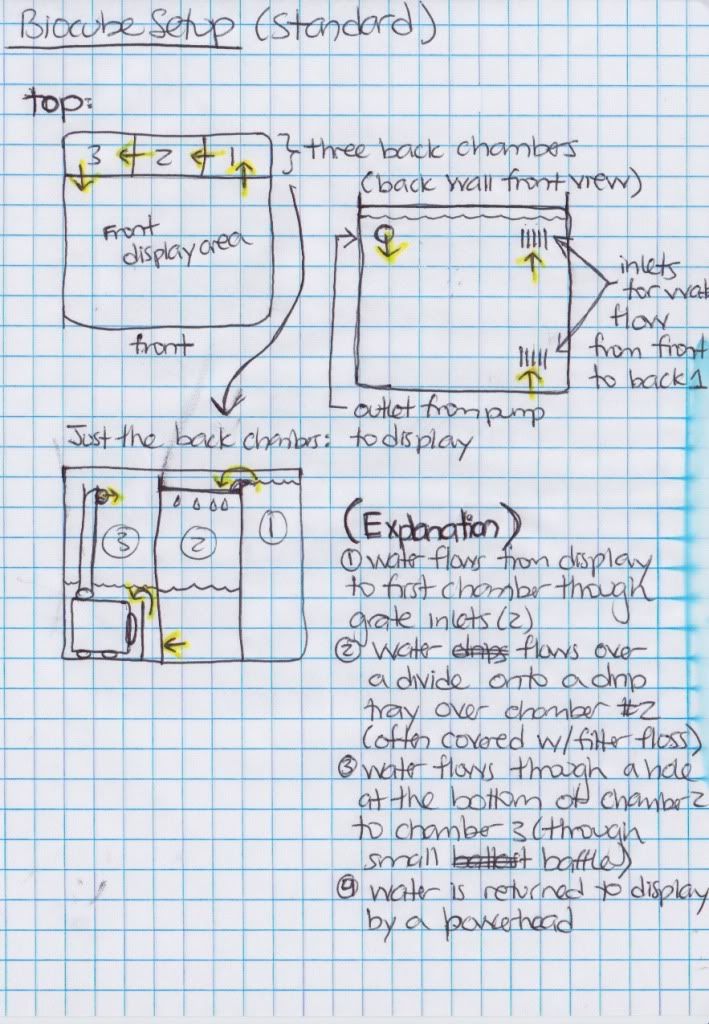Hello Reefers!
The topic on my mind is abnormal refugia. Sounds fun, eh? Thought so
Anyways, as I am a marine ecologist, not an engineer, plumber, or man, I need some help.
The overview: My dad has a 29g biocube that is currently being revived and next to it (currently functioning as the clownfish's summer home), an 8g biocube. I'm in charge of making it a pretty, low-maintenance system. I know that two separate reefs, especially two nano reefs, will be too much for my parents to handle. So the choice is whether to make it one system or let the 8g sit empty, sad, and unfulfilled. I vote for the former.
This is my plan (sorry I can't figure out how to rotate it!):

The 8g (future display fuge) is about 4 inches lower than the 28g. This would enable me to use gravity/suction to drive flow from the display to the fuge. Is this the best way to do it? Would the rates of flow in/out be more consistent if I used a pump to drive out flow?
What I want to know is, could it work? (I have a feeling that it should. I've seen people do it on other sites.)
Then we can work out details.
Cheers!
Tori
The topic on my mind is abnormal refugia. Sounds fun, eh? Thought so
Anyways, as I am a marine ecologist, not an engineer, plumber, or man, I need some help.
The overview: My dad has a 29g biocube that is currently being revived and next to it (currently functioning as the clownfish's summer home), an 8g biocube. I'm in charge of making it a pretty, low-maintenance system. I know that two separate reefs, especially two nano reefs, will be too much for my parents to handle. So the choice is whether to make it one system or let the 8g sit empty, sad, and unfulfilled. I vote for the former.
This is my plan (sorry I can't figure out how to rotate it!):

The 8g (future display fuge) is about 4 inches lower than the 28g. This would enable me to use gravity/suction to drive flow from the display to the fuge. Is this the best way to do it? Would the rates of flow in/out be more consistent if I used a pump to drive out flow?
What I want to know is, could it work? (I have a feeling that it should. I've seen people do it on other sites.)
Then we can work out details.
Cheers!
Tori



